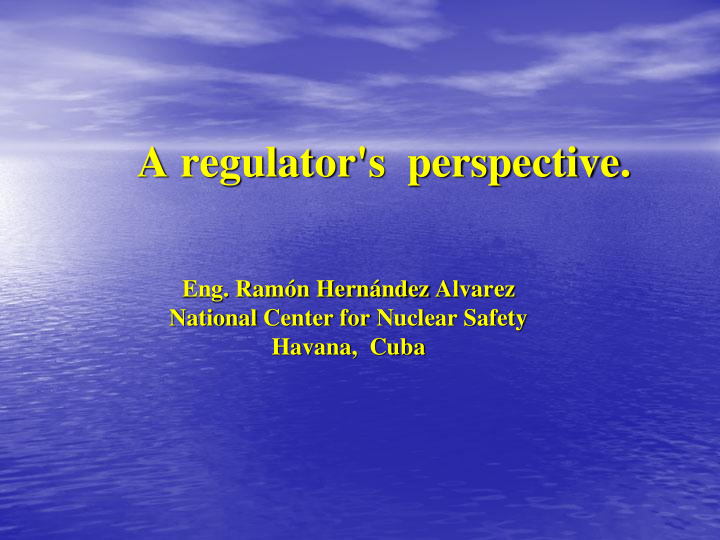



A regulator's perspective. Eng. Ramón Hernández Alvarez National Center for Nuclear Safety Havana, Cuba
Introductory remarks The existence of a Regulatory Authority (RA), supported by an appropriate regulatory framework. It is usual that the regulation is exercised in a way shared between more than one regulatory authority. The dynamics of the technical and technological progress, which occurs at amazing speed. Therefore, an effective and efficient performance of the RA, would require: properly qualified and trained staff, knowledgeable of the latest advances in the medical technology using ionizing radiations, the staff is enough and proportional to the nationwide development and scope of the radiological medical practices introduced.
Institutional relationships An effective regulatory program requires the cooperation between the Regulatory Authorities as well as with other institutions : HEALTH REGULATORY REGULATORY AUTHORITY AUTHORITY Occupational Radiation Dosimetric services Competent and laboratories for Protection authority in education dosimetric calibration Professional societies Universities and other (radiotherapy, nuclear medicine, radiology, academic institutions radiological protection)
Technical, normative, and financial weaknesses • Insufficient human resources appropriately qualified. • RP equipment obsolete and, on occasions, insufficient. • Nonexistence of cooperation relationships and coordination among regulatory authorities and with the other institutions • Inconcistencies, duplicity and contradictions in the regulations. • Inefficient mechanisms for upgrading of the regulations. • Limited scope of dosimetric services and non compliance with the international standards. • Individual radiological surveillance non-conmensurate with the radiological risks. • Little development in safety culture. • Radiation Protection Programs are not formally implemented at the institutions. • Insufficient size or nonexistence of infrastructures on metrology. • Significant hierarchical differences among the different regulatory authorities.
Conclusions 1. The improvement of the regulatory control in occupational radiological protection requires: • a detailed analysis of the aspects that hinder the execution of the safety regulations and requirements. • a RA with permanent self-assessment attitude for sufficiency of its program. • a RA provided with enough human resources, with qualification and training conmensurate with the medical practices introduced. 2. The implementation of an appropriate management system and fostering of a safety culture bear a significant contribution towards the achievement of the occupational radiological protection objectives in the medical practice.
Recommend
More recommend